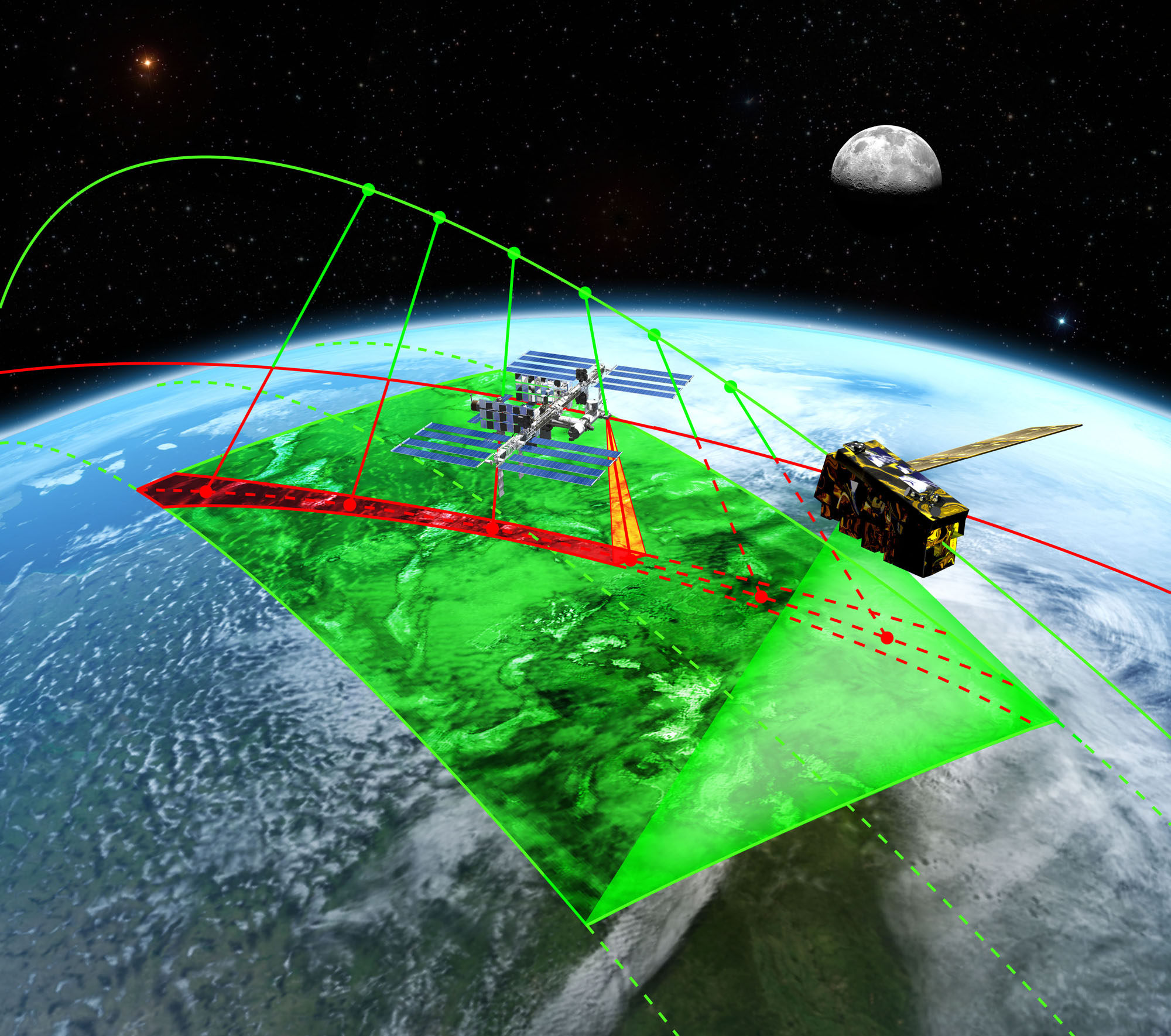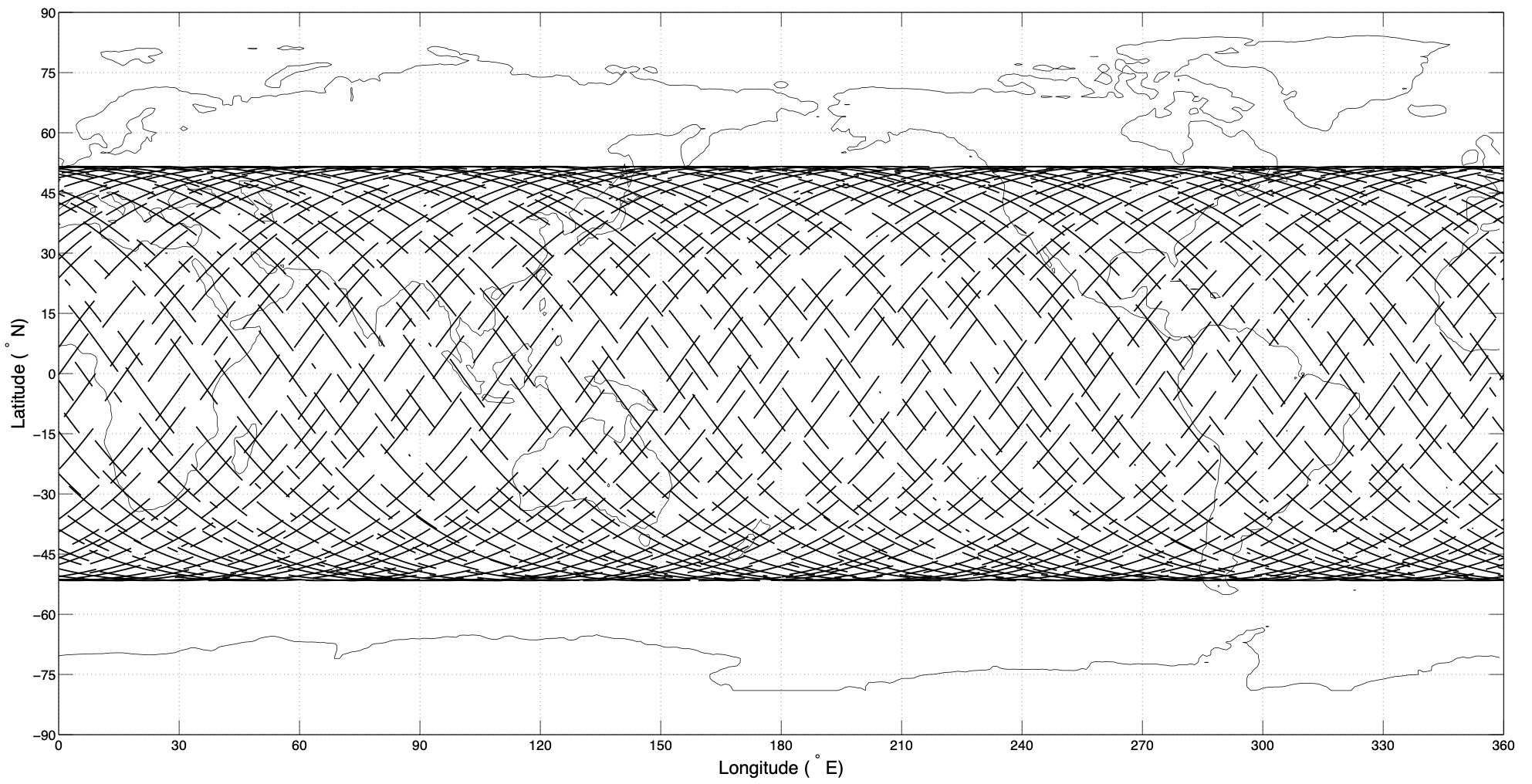Inter-Calibration Overview
One of the main science objectives of the CLARREO Pathfinder (CPF) mission is to demonstrate inter-calibration between CPF and CERES (its shortwave broadband channel) and VIIRS (its visible and near-infrared spectral bands). This will be achieved using CPF as an SI-traceable (i.e. metrologically traceable to the International Standard of Units) on-orbit reference to inter-calibrate both CERES and VIIRS. Inter-calibration is the practice of relating measurements from a target instrument to a reference instrument, with a stated uncertainty. Inter-calibration enables improved consistency among satellite measurements by identifying and reducing biases and inter-calibration linear term differences. The critical need for sensor inter-calibration for weather, climate and natural resources research, and applied science studies led to an international effort called the Global Space-Based Inter-Calibration System (GSICS) [Goldberg et al., 2011]. Inter-calibrating two instruments in-orbit is most useful for decadal climate monitoring when at least one serves as a high-accuracy reference with on-orbit traceability to international standards (i.e. SI-traceability). CLARREO Pathfinder will demonstrate the technology and measurement approaches and the analysis techniques needed for an instrument like HySICS to serve as an on-orbit reference for other Earth-orbiting sensors also taking shortwave measurements.

Orbit track of CPF on the International Space Station (ISS) (red) at 400 km altitude and 51.6° orbit inclination, crossing under the Suomi-NPP or NOAA-20 orbit track (green) at ~830 km altitude, in a 13:30 Local Time sun-synchronous 98.7° orbit. This image illustrates the ability of CPF to match elevation and azimuth angle of inter-calibration targets (CERES or VIIRS). CPF will then scan across the field-of-view of the target instruments during the inter-calibration event, as shown in the animations below. (Courtesy NASA)
Innovative Inter-calibration Approach
Key to the CPF inter-calibration approach [Lukashin et al., 2013] is the CPF measurement capability to rotate the entire instrument, which allows the CPF and target instrument viewing angles to be very closely matched. Prior to taking inter-calibration measurements with CERES and VIIRS, the inter-calibration team predicts the inter-calibration opportunities for the upcoming ten-day measurement period. These predictions are shared with the CLARREO Pathfinder Reflected Solar (CPRS) Payload Operations Center (CPOC) (see Gallery for images) at LASP for inclusion in the planned operations sequences for that time period. The inter-calibration team has also used these predictions prior to launch to ensure there is an understanding of the number, average length, and spatial distribution of inter-calibration events that can be expected during the one year of prime mission operations of CPF on the International Space Station (ISS).

Predicted inter-calibration events between CLARREO Pathfinder on ISS and CERES/VIIRS on NOAA-20 during 1 year of operations. There are about 1,300 viable inter-calibration events. (Courtesy NASA)
The requirement for CLARREO Pathfinder inter-calibration is to demonstrate that the uncertainty from the inter-calibration data analysis can be limited to 0.3%, the same uncertainty as the CPF instrument’s radiometric measurement uncertainty. It has been shown that the uncertainty associated with the simultaneous nadir overpasses (SNO) method (current state-of-the-art) can be as small as 1% [Cao et al., 2008]; however, this level of uncertainty is not sufficient for climate trend detection studies [Wielicki et al., 2013; Shea et al., 2017]. Additionally, the CPF inter-calibration approach provides more measurements matched in space, time, spectral band, and angle than the SNOs commonly used in inter-calibration studies. The total uncertainty from inter-calibrating CPF measurements with any target will include the HySICS calibration uncertainty, the inter-calibration data matching uncertainty, the uncertainty contributed by the polarization sensitivity of the target sensor (if applicable), and any other uncertainty contributions unaccounted for by the inter-calibration corrections. The CPF inter-calibration approach will significantly improve upon commonly used inter-calibration techniques by both providing the community with a rigorous in-orbit, SI-traceable reference through the CPF measurements, and by demonstrating a novel inter-calibration technique capable of achieving the stringent uncertainty requirements needed for climate change studies.
Nominally, CPF will take spectral radiance and reflectance measurements of Earth at nadir. Using predictions of upcoming inter-calibration events, the instrument will rotate to closely match its viewing angle to that of the instrument(s) it is inter-calibrating. (Courtesy NASA)
After rotating to match the target instrument viewing angle, CPF will scan its field-of-view across that of the target instrument. After the inter-calibration event is complete, the view will be returned to nadir. (Courtesy LASP)
Improved Lunar Calibration Standard
The CPF instrument will also position itself to take direct measurements of lunar spectral reflectance. This will be done throughout the one year of prime mission operations to span a wide range of lunar phase angles and librations. The range of lunar phase angles observed are specified by instrument operations; the librations observed are governed by the orbits of the ISS and the Moon. Taking a year of measurements will build up a substantial database of high accuracy lunar spectral reflectance measurements that will be used to update the USGS ROLO (Robotic Lunar Observatory) model [Stone et al., 2008], which constitutes the lunar calibration reference. These updates reduce the uncertainty of the Moon as an on-orbit calibration reference by approximately 10 times. The resulting improvements in the absolute reflectance of the lunar surface can be used to tie measurements from other reflected solar instruments to CPF measurements even after the lifetime of CPF, thanks to the stability of the reflectance of the lunar surface [Kieffer, 1997; Kieffer and Stone, 2005].
Additional Inter-calibration Measurements
In addition to Low-Earth Orbit (LEO) inter-calibration measurements taken within 10 minutes of CERES and VIIRS measurements and lunar spectral reflectance measurements, CPF will be taking inter-calibration measurements (within 7.5 minutes) for at least one instrument in geosynchronous equatorial orbit (GEO) (TBD) and will take nadir measurements over land surface sites (e.g. Libya-4) commonly used for vicarious calibration. Although the lunar, GEO, and land site measurements will not be processed into Level 4 data products by the CPF inter-calibration team, these data will be available to the scientific community for processing and further data analysis. The GSICS community has expressed interest in CLARREO Pathfinder providing GEO inter-calibration measurements in addition to the LEO measurements included within the mission scope. Additionally, it is expected that various satellite communities (e.g. land and geostationary weather imaging communities) that use stable land surface sites to track the stability of their instruments, will benefit from the high accuracy spectral measurements taken over a range of solar angles.
